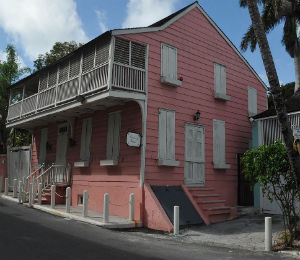The Bahamas is an archipelago consisting of over 700 islands in the Caribbean. From the pre-Columbian era, through piracy and colonization, the island nation has a rich, diverse history.
The Lucayan-Arawak Amerindians were the first known settlers. Living rather peacefully for a thousand years, visitors can learn much about these people. Crystal clear waters offer alluring snorkeling and scuba diving expeditions in places like Pigeon Creek and Deadman's Reef. The Lucayan National Park, one of the world's largest underwater cave systems, is another place to visit. Each site provides a historical view where you may be lucky to spy skulls, pottery pieces, shell beads, and other artifacts belonging to the early settlers.
Scholars believe it was the Lucayan people Christopher Columbus first encountered when he arrived in the New World. Landfall Bay, on San Salvador, claims to be the spot where Columbus first stepped foot in the Americas in October of 1492. However, this claim is hotly contested and many believe Cat Island was his first stop. If Cat Island is a stop for you, be sure to visit the highest point in the Bahamas, Mt. Alvernia. At the summit, you will find the Hermitage. Built by hand by Father Jerome, it is a small, stone monastery. Just south of this site lies the ruins of the Armbrister Plantation. Nearby, you will also see the ruins of the Deveaux Plantation. Wherever Columbus landed, both San Salvador and Cat Island are worthy calls on your vacation.
Instead of colonizing the islands, the Spanish sold the Lucayan people into slavery, shipping them to the mines of Hispaniola. This led the islands to remain largely uninhabited from 1513 to 1648. Around this time, the first European settlers began to arrive, by way of Bermuda. From about 1690 to 1720, the islands-especially in Nassau- saw the Golden Age of Piracy. The Bahamas became a British Crown Colony in 1718.
Nassau is home to many historical landmarks. First, let us stop at Fort Montagu. Construction of the fort began in 1741 to help defend the British possession from the invading Spanish. Sitting atop a ridge just south of the fort is a landmark known as Blackbeard's Tower. Although refuted by historical evidence, legend says it was built by Edward "Blackbeard" Teach. The view alone from this place is worth the stop.
Now let us travel to another historical fort. Fort Charlotte is the largest of the three forts still on the island. It was built in 1789, by John Murray, also known as Lord Dunmore. Fort Charlotte has incredibly interesting ramparts, a now waterless moat, and underground tunnels leading to the dungeons. Lord Dunmore was also titled Viscount Fincastle. Which brings us to Fort Fincastle. Built in 1793, the fort offered gorgeous panoramic views of the islands and harbor. It sits near the top of the famous Queen's Staircase. This amazing structure was crafted by slaves from a limestone wall to honor Queen Victoria. An impressive 65 steps to the top, for a total ascent of 102 feet, the Queen's Staircase is one of the most visited landmarks.
Next visit Balcony House. Reportedly the oldest wooden structure in the island country, it dates from the late 1700s and was restored in 1994 to house an antiquities museum. Then journey to Parliament Square. The center of government, exquisite examples of colonial architecture of the early 1800s now house the Supreme Court, the House of Assembly, and the Chambers of Parliament. In the center of the square is a marble statue of Queen Victoria. Of special mention, visit the first building in Parliament Square. The Nassau Public Library and Museum was originally used as a jail. The octagonal shaped structure was converted into a library in 1873 and is the home of many colonial documents and artifacts.
These places offer the tip of the sandbar on your historical sightseeing expedition through the captivating and enchanting Bahamian nation. Look forward to a spellbinding voyage, as there are so many things to do in the Bahamas.

